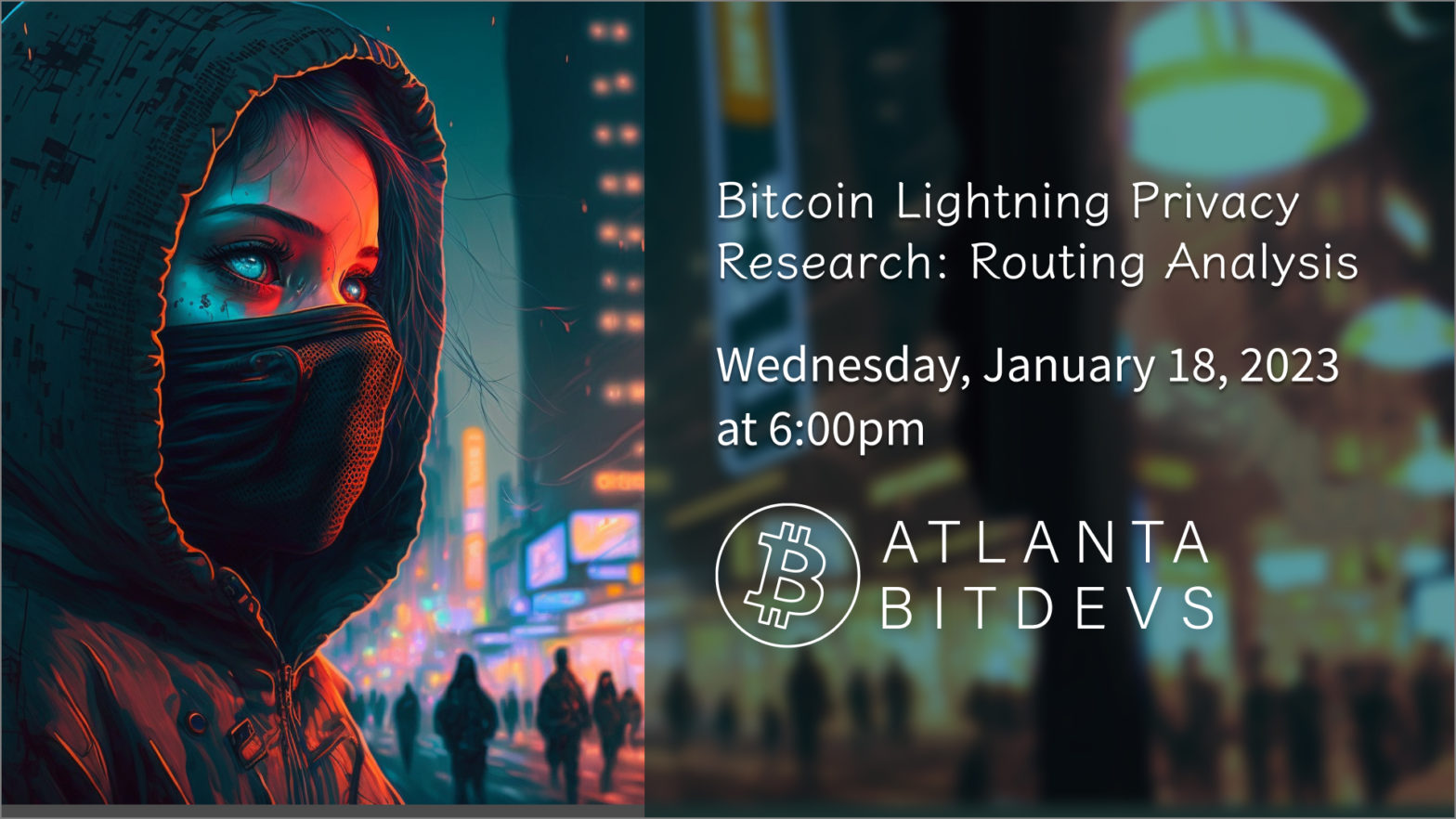We’re meeting tonight to discuss the Routing Analysis chapter of Lightning Privacy Research. Here are some notes to help prepare you for the discussion!
NOTE: This is just Stephen sharing his notes with you and not actually a well thought-out or spellchecked instructional plan. 🙃
Lightning Privacy Introduction
https://lightningprivacy.com/en/introduction
- Bitcoin Layer 1 – all TXes visible on a public blockchain
- Lightning (Layer 2) – No central ledger, peer-to-peer
Problems
- When a LN payment is associated with a BTC TX
- P2P LN nodes know certain payment details
- Highly connected LN nodes see a larger percent of network
❓ Questions
What is an anonymity set?
Routing Analysis
https://lightningprivacy.com/en/routing-analysis
- LN uses onion routing for a certain amount of source and destination privacy
❓ Questions
How is LN onion routing similar to TOR? How is it different?
- Problem statement – there’s situations where the sender and receiver can be learned by routing nodes
- Some scenarios allow routers to infer this info
- A single actor controlling multiple nodes can correlate payment info
❓ Questions
What is an LSP? How might using an LSP affect privacy?
- HTLCs – using the same payment hash each time can affect privacy
- Wormhole attack – allows dishonest users to steal routing fees from honest users along a payment path – outlined in this paper: https://eprint.iacr.org/2018/472.pdf
- Basically, 2 malicious nodes (Mike and Mallory) are on the same payment route and collaborate
- Normal behavior: nodes pass the preimage back to the prior node to unwind HTLCs
- Evil behavior: Mike passes preimage back to Mallory, skipping all the nodes in between, and M & M take the routing fees of every node that was skipped
- PTLCs might fix this
- PTLCs explained on SuredBits – https://suredbits.com/payment-points-part-1/#references
- Timing delays – basically, estimating how far away source of destination of a payment is by how long it takes to settle
- Top nodes can perform timing analysis on the majority of payments https://arxiv.org/pdf/2006.12143.pdf
- What if you run multiple nodes, and you route a payment for amount X, and then milliseconds later your other nodes routes a payment for slightly less than amount X.
- What if average payment time between your node and neighbor is 100ms? If you route a payment to tyour neighbor and the HTLC or PTLC is fulfilled in about 100ms, you can assume your neighbor was the final hop.
❓ Questions
Should nodes add a random delay to fix timing analysis? It must be 2-3x delay to be meaningful, but does this affect usability of the LN? (See Peter Todd’s comment on opting into slower payments for the sake of privacy)
- Random delay could be neat, but isn’t enforceable
- MPP – Multipath payments
- Randomize them to improve them
- Multipath improves privacy
- Randomizing the multipath and multiple shards to each node improves further
- Splinter payments – MPP initiates midway through route
- Splinter is theoretical atm
- Protocol change needed?
- Can splintering be enforced?
- Longer paths?
- 6 degress of sep
- Go beyond 9 hops
- Analyzing multipath payments
- Less info can be gleaned (dont know full payment amount)
- Anonymity set increases if more folks use MPP
- Thought to self: reminds of CoinJoins in a way. Could people route MPPs with preset denominations to improve privacy?
❓ Questions
- What are positives for implementing the author’s suggestions?
- What are negatives for these suggestions?
- Implementation notes
- PTLCs – no progress has been made since taproot softfork
- Timing delays – no active work being done to the knowledge of the authors
- MPP is possible today. Splintering has not been discussed before.

